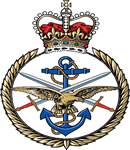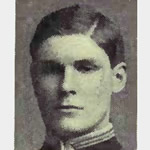Commemorated: | |||
| 1. Memorial: | Le Touret Military Cemetery, Richebourg-L'Avoue | I. A. 18. | |
| 2. Book: | The (1921) Masonic Roll of Honour 1914-1918 | Pg.125 | |
| 3. Memorial: | The (1940) Scroll - WW1 Roll of Honour | 47B GQS | |
Awards & Titles: | Military Cross | ||
Family :
Son of Capt J R K L Heyland RA and Mrs. M. B. Heyland, of Millcroft, Pirbright, Surrey.Education & Career :
Heyland went to Wellington College between 1898 and 1903, along with his 3 brothers. His brother Arthur Alexander Heyland, 5th Gurkha Rifles, was also killed in the same sector in May 1915
He was in the Orange. He was capped in the [Rugby] XV in the backs and was in the Shooting VIII.
He went to Sandhurst in 1903.
Service Life:
Campaigns:
- The First World War 1914-1918, World-wide.
| Unit / Ship / Est.: 9th Gurkha Rifles |
| Action : The Battle of Neuve Chapelle and subsidiary actions |
Following a winter in the trenches the BEF was prepared to take the offensive against the Germans. The location was Neuve Chapelle, a small village in the front line below Aubers Ridge near Lille. Aubers Ridge was a low but significant hill and the intention at Neuve Chappell was to punch through the German front line, occupy the ridge and exploit with cavalry. It was a battle fought by two Corps of the BEF, the Indian Corps and IV Corps both largely consisting of regular battalions. It was to be preceded by the most violent artillery barrage of the war to date. Unfortunately in what was to be the start of the 'learning curve' for the BEF the artillery barrage, whilst violent, failed in some parts ? a failure that was to be costly and which delayed the assault and allowed the Germans to recover. Whilst the men were exceptionally brave they became bogged down as German machine guns and artillery stopped the momentum of the assault and by the end of the first day (10th March 1915) they were digging in. The following day the assault was repeated with fresh battalions but with no success. By the 12th March the Germans had recovered their poise, had brought in reserves and were ready to counter attack.
Neuve Chapelle (10-12 March 1915) was the first planned offensive battle by the BEF in France and achieved limited tactical success but not the expected breakthrough. It highlighted the problem of delay in execution that allowed the defending Germans to regroup, often consequent on small incidents and errors. Having stabilised the situation following the German sweep into France and the counter attack that eventually established static trench warfare on the western front, there was significant pressure on Britain to take a share of the burden from the French (who had without question had born the brunt of the fighting). Although the battle was effectively over by 12th March, the official battle nomenclature included actions in other sectors up to 22 April 1915 including the significant actions at St Eloi and at Hill 60 (Ypres).
After his ULIA list year attached to the Sussex Regt he joined the 9th Gurkhas in 1906 being promoted Lieutenant in 1907. He was made Adjutant of the Bttn for 5 years from 1910.
Lieutenant, Dehra Dun, (1912).
Detail :
Captain John Rowley Lunell HEYLAND, 9th Gurkha Rifles, was killed during the Battle of near Neuve Chapelle whilst directing his mens' fire.
His CO wrote "he has left a blank in the Battalion which he served so loyally, which throughout all ranks is felt most deeply and by none more than myself, and you know what I thought of him. He died a noble death and such as I have heard him personally express he would prefer to any other."
His brother Arthur HEYLAND, attached to the 2nd Gurkha Rifles was also killed in the same sector in May 1915 and is commemorated on the nearby Le Touret Memorial.
The other two brothers were wounded in the war.
Citations & Commemorations :
He won the MC on 1 January 1915, in the first award of the Military Cross.Masonic :
| Type | Lodge Name and No. | Province/District : |
|---|---|---|
| Mother : | Siwalik No. 2939 E.C. | Bengal |
Initiated | Passed | Raised |
18th July 1912 | 19th September 1912 | 17th October 1912 |
He was made Senior Warden of Siwalik Lodge No 2939.
The Lodge became Lodge Siwalik Dr. Durga Prasad No. 62 on the formation of the United Grand Lodge of India on 24th November 1961.
Source :
The project globally acknowledges the following as sources of information for research across the whole database:
- The Commonwealth War Graves Commission
- The (UK) National Archives
- Ancestry.co.uk - Genealogy, Family Trees & Family History online
- ugle.org.uk - The records of the United Grand Lodge of England including the Library and Museum of Freemasonry
Additional Source:
- Founder Researchers : Paul Masters & Mike McCarthy
- Researcher : Bruce Littley

